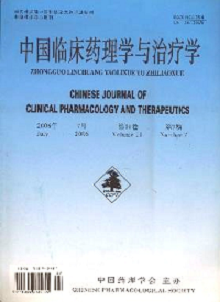Pravastatin improves level of antithrombin Ⅲ in rats combined nephrotic syndrome with hypercoagulability
GAO Xu-xia, ZHANG Dao-you, SONG Jian-guo, ZHANG Hui
2006, 11(7):
801-805.
 Asbtract
(
157 )
Asbtract
(
157 )
 PDF (197KB)
(
95
)
References |
Related Articles |
Metrics
PDF (197KB)
(
95
)
References |
Related Articles |
Metrics
AIM: To investigate the anticoagulant effect of pravastatin and low molecularweight heparin (LMWH), as well as their combination, over time, in a rat model of experimental nephrotic syndrome.METHODS: Healthy SD male rats were chosen randomly to perform nephrotic syndrome models by single injection of Adriamycin via tail vein, the matched normal control rats received single injection of equivalent 0.9 % sodium chloride instead.After 14 days, the models were set up and randomized into model control group, pravastatin group (pravastatin 2mg·kg-1·d-1gavage once a day) , LMWH group(LMWH 200 U·kg-1 ·d-1 intraperitoneal injection once a day) and combined treatment group(pravastatin 2mg·kg-1 ·d-1gavage+ LMWH 200 μ·kg-1 ·d-1intraperitoneal injection) , then all rats underwent measuring proteinuria every two weeks and fibrinogen, antithrombin Ⅲ(AT Ⅲ) , D-dimer, platelet count, serum total protein and serum albumin after 4 weeks of treatment.RESULTS: The concentration of fibrinogen and D-dimer in model group was higher significantly than that in control group, and the level of AT Ⅲ was lower remarkably than that in control group, but platelet count had no obvious change; Compared with model group, pravastatin could increase the level of AT Ⅲ and decrease the concentration of D-dimer, but the concentration of fibrinogen and platelet count did not change obviously; LMWH and combined treatment could also decrease level of D-dimer, but had no great effects on AT Ⅲ, fibrinogen and platelet count; all treatment group had no obvious change of serum total protein and serum albumin.CONCLUSION: Adriamycin-induced nephrotic syndrome rat models have hypercoagulability and pravastatin can increase the level of ATⅢ.;


